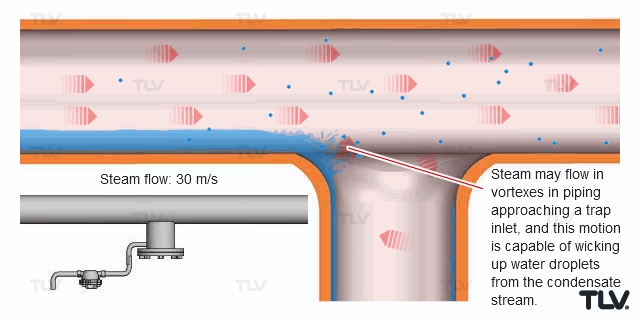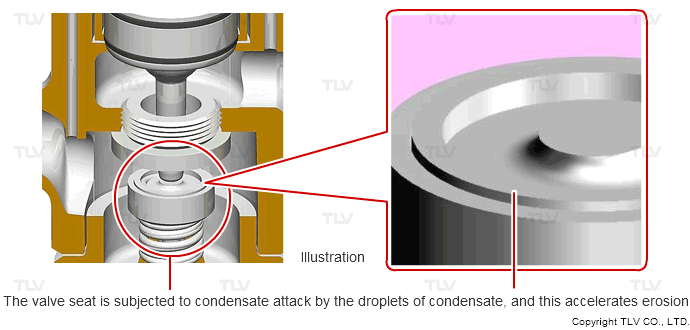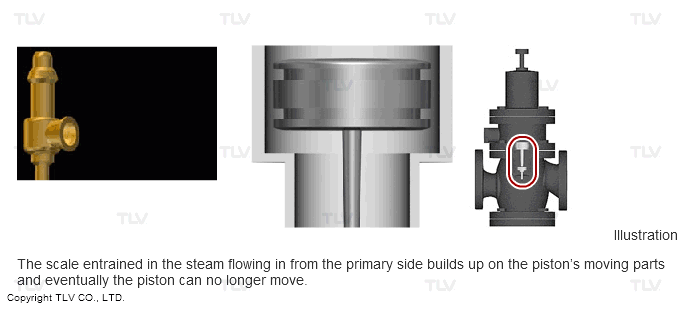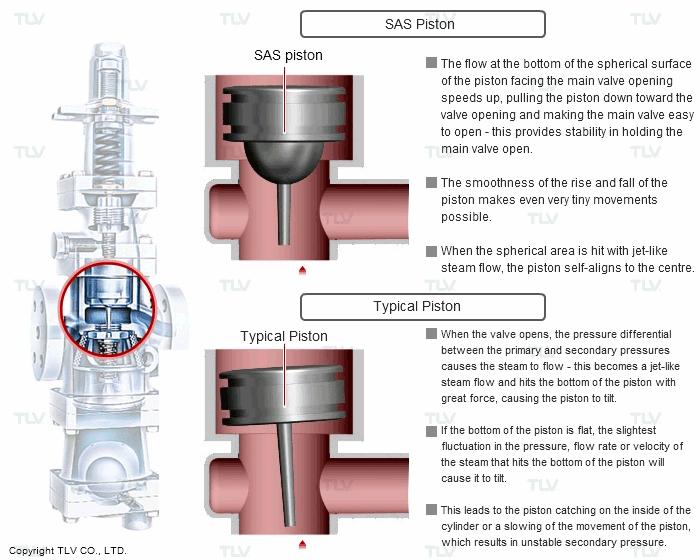Separates condensate and supplies high quality steam (built-in high performance cyclone separator)
TLV determined that an additional cause of pressure reducing valve failure, and a critical factor in service life, is erosion of the valve seat caused by condensate entrained in the steam flow. COSPECT®’s built-in separator and steam trap separate out and remove this condensate, thus protecting the valve seat from erosion.
Additionally, COSPECT®'s built-in steam trap allows for the discharge of any condensate that accumulates in the inlet piping during system shutdown. This helps prevent the formation of carbonic acid (corrosion) and helps protect the system from water hammer and other problems caused by condensate pooling.
Why Condensate Separation is Necessary
Drip legs are designed to remove a considerable portion of the condensate flowing through piping – that which has fallen out of the steam flow, but cannot remove the water droplets entrained within the flow itself.
Water droplets entrained in steam will be carried over and pass by the drip leg because of the speed at which steam flows through piping.

Erosion caused by condensate droplets
In some cases, normal operation cannot be restored even with cleaning. Many pressure reducing valves for steam have become unusable after having been in service for only a period of 2-3 years. There are many instances in which a main cause of the short service life of pressure reducing valves is the condensate entrained in the steam flow.
If large quantities of condensate are entrained in the steam that passes through the pressure reducing valve, depending on the velocity of the steam the droplets of condensate in the steam flow may hit the valve seat of the pressure reducing valve at extremely high speeds and cause erosion. This results in the sealing properties of the pressure reducing valve deteriorating over just a short period of time.
After suffering this kind of damage, no amount of cleaning can restore normal operation. The only alternatives in such a case are to replace either the damaged parts or the entire pressure reducing valve.

Removes scale and rust and supplies high quality steam (built-in strainer)
A strainer is built in to prevent rust scraps and other large foreign matter from flowing into the control valve.
Why scale and rust must be removed
A main cause of pressure reducing valve trouble is due to tiny particles of scale or rust getting into the gaps between these moving parts and preventing the parts from moving smoothly. It is also possible that in many cases tiny particles of scale are carried along in the condensate and merely installing a Y-strainer in front of the pressure reducing valve isn’t enough.

Shock-absorbing spherical (SAS) piston maintains stable secondary side pressure
Self-aligning, shock-absorbing spherical piston and advanced pilot regulator designs maintain secondary pressure accuracy.
